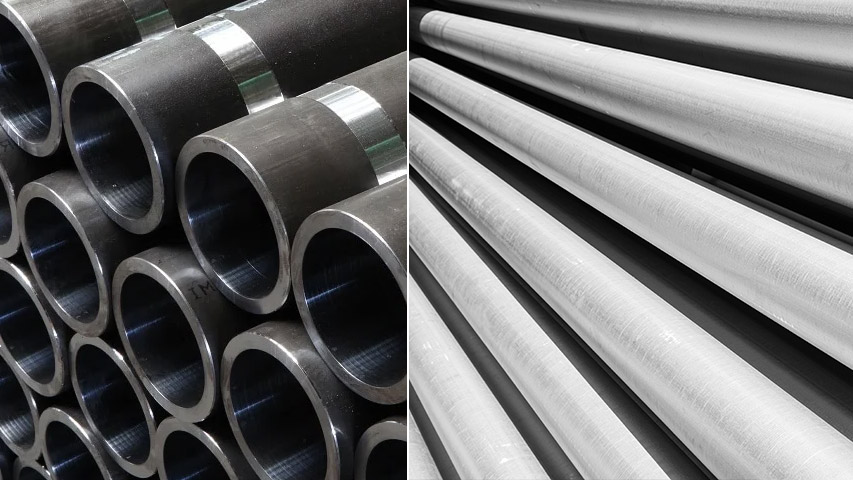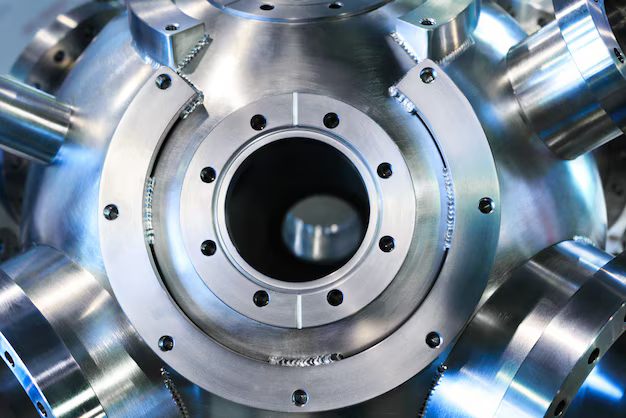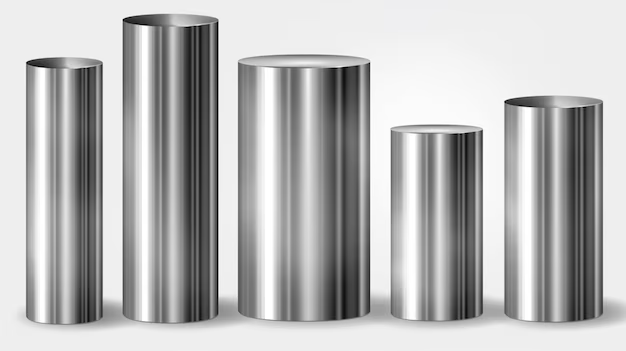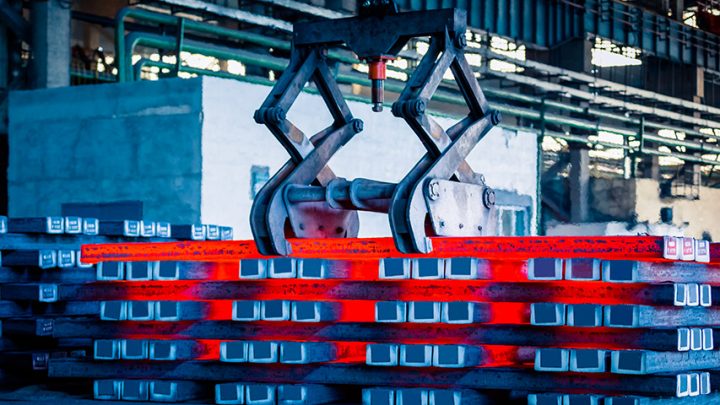There are different kinds of steel available in the market with certain specifications but this blog is all about how carbon steel is different from alloy steel. If you want to know how these two are different, their uses in the specific field, how to choose a perfect steel type based on your requirement, then this blog is all you need. You will understand till the end of the blog about either type of steel and will be free of stress on which one to buy for your purpose. Also, you will know how to connect with alloy steel exporters and carbon steel manufacturers in India or any other country.
About Steel
Steel is composed of iron and carbon. The carbon content in steel can range from 0.1 to 1.5 per cent, but the most widely used grades of steel contain only 0.1 per cent to 0.25 carbon. Elements such as manganese, phosphorus and sulphur are found in all kinds of steel. Though, it is important to know that manganese is the only element that enhances the quality of steel and provides it with beneficial effects whereas phosphorus and sulphur are said to deteriorate the quality and strength of the steel. The most important thing to look for in steel is its durability, if that is not up to the mark, or is having deteriorated quality, it is best to eliminate the use of such steel.
Carbon steel and its types
Carbon steel contains trace amounts of alloying elements. Carbon steels can further be categorised into three groups based on carbon content present in it which are low carbon steel, medium carbon steel, high carbon steel.
Low Carbon Steel
These kinds of steel contain low carbon content of up to 0.3 per cent. It is also known as mild carbon steel.
Medium Carbon Steel
This kind of steel contains carbon content ranging from 0.3 per cent to 0.6 and a manganese content ranging from 0.60 per cent to 1.65 per cent. This product is stronger than the low carbon steel as the presence of manganese enhances its quality and it can thereby lead to an outstanding performance when used in specific areas.
High Carbon Steel
This kind of steel contains more than 0.6 percent carbon content. It exhibits high strength and has extreme hardness compared to others.
Carbon steel is probably used for at least 80 per cent of all companies in refineries, petrochemical industries because it is inexpensive, easily available and has easy fabrication. Hence, carbon steel is selected more often when required.
Alloy Steel
Alloy Steel contains many alloying elements altogether other than carbon such as manganese, chromium, nickel, silicon, molybdenum, copper and aluminium. These elements are present in varying proportions to manipulate the steel’s properties. It also contains 9 percent of chromium. All alloy steel pipes and fittings go for post welding heat treatment irrespective of the type or thickness of weld to improve resistance. Alloy steel possesses better and higher resistance than carbon steel.
Types of alloy steels are:
Low Alloy Steel
When Nickel, chromium, molybdenum, and other alloying elements consist of less than 10.5 per cent weight they are defined as low alloy steel. Examples of low carbon steel are nickel steel, weathering steel etc. Alloy steel is used in abundance due to the properties it exhibits. It has great strength, good yield strength, etc. It also has high heat resistance which indicates its compatibility with high-temperature areas. Applications of low alloy steel are its use in fabricating defence vehicles, construction equipment, pipelines, pressure valves, etc.
High Alloy Steel
High alloy steel has an alloying content of more than 10.5 per cent in proportion. They are costly and special and serve a special purpose. Examples of high alloy steel are stainless steel, high-speed steel, etc. Stainless steel is steel with a high degree of corrosion and has chemical resistance. Corrosion resistance property makes it the best fit for the chemical industry as it does not corrode off easily or oxidise due to the chemicals. It is corrosion-resistant mainly due to the presence of high chromium percentage. Stainless steel can further be classified into two groups that are plane chromium steel and high chromium low nickel steel. Plain chromium steel and high chromium low nickel steel are used in making die, valves, domestic utensils, etc. High-speed steel is used for making high-speed cutting tools and it has further types such as tungsten high-speed steel and molybdenum high-speed steel.
Best Platform to look for carbon steel and alloy steel manufacturers
If you are looking for a perfect place to find the suppliers and manufacturers that will provide you with the best deals then you need to visit enggpro.com. Enggpro is a leading digital global marketplace for engineering equipment and services that lists a variety of suppliers and manufacturers from all across the world on its website. You can find carbon steel suppliers in India, the USA, the Middle East and alloy steel manufacturers from India. Enggpro understands your needs and verifies each vendor before listing them on their website, providing reliable contacts, so you can have a better experience in future. You will get the best deals and premium quality carbon steel and alloy steel based on your preferences.
You can now get the kind of steel you find suitable for your use. You can choose which kind of steel you want as per requirement, carbon steel or alloy steel. Also, look for the standardisation and certification before making any purchase as it will help you fetch the high-quality product.



